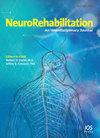Utility of in-session assessments during cognitive behavioral therapy for depression after traumatic brain injury: Results from a randomized controlled trial
IF 1.8
4区 医学
Q3 CLINICAL NEUROLOGY
引用次数: 0
Abstract
BACKGROUND:The development of depression after moderate to severe traumatic brain injury (TBI) is common. Cognitive-behavioral therapy (CBT) can be used to treat post-TBI depression, but the symptoms response is poorly described. OBJECTIVE:This secondary analysis assessed: (1) the trajectory of depression symptoms up to 12 sessions of CBT, (2) which depressive symptom clusters were responsive to in-person and phone CBT, and (3) whether interim depression thresholds predict 16-week treatment response. METHOD:This secondary analysis of the IRB-approved Life Improvement Following Traumatic Brain Injury trial included 100 adults with major depressive disorder (MDD) within ten years of moderate to severe traumatic brain injury from throughout the US. We used a combination of descriptive, graphical, and diagnostic accuracy methods. RESULTS:Cardinal and cognitive-affective symptom clusters improved most from CBT over 16 weeks. At 8 and 16 weeks, the most responsive individual symptoms were anhedonia, depressed mood, and fatigue; the least responsive were sleep and appetite. PHQ-9 thresholds with a Negative Predictive Value greater than 0.7 for sessions 6, 7, and 8 were, respectively: >15, >10, and >9. CONCLUSION:In-person and phone CBT led to similar symptom responses during treatment. Additionally, using PHQ-9 thresholds for predicting intervention response within eight sessions may help identify the need for treatment adjustments.认知行为疗法治疗脑外伤后抑郁期间的会话评估的效用:随机对照试验的结果
背景:中度至重度创伤性脑损伤(TBI)后出现抑郁症很常见。认知行为疗法(CBT)可用于治疗创伤性脑损伤后抑郁症,但对症状反应的描述却很少。目的:这项二次分析评估了:(1)抑郁症状在接受 12 次 CBT 治疗后的变化轨迹;(2)哪些抑郁症状群对面对面和电话 CBT 治疗有反应;(3)中期抑郁阈值是否能预测 16 周的治疗反应。方法:这是对经 IRB 批准的 "创伤性脑损伤后生活改善 "试验进行的二次分析,包括来自美国各地的 100 名在中度至重度创伤性脑损伤后十年内患有重度抑郁症(MDD)的成人。我们结合使用了描述性、图表和诊断准确性方法。结果:在16周的CBT治疗中,心因性症状和认知情感症状群得到了最大改善。在 8 周和 16 周时,反应最明显的单个症状是失神、情绪低落和疲劳;反应最不明显的是睡眠和食欲。在第 6、7 和 8 次治疗中,PHQ-9 阴性预测值大于 0.7 的阈值分别为:15、10 和 9。结论:在治疗过程中,面对面和电话 CBT 可导致相似的症状反应。此外,使用 PHQ-9 阈值预测八个疗程内的干预反应可能有助于确定是否需要调整治疗方案。
本文章由计算机程序翻译,如有差异,请以英文原文为准。
求助全文
约1分钟内获得全文
求助全文
来源期刊

NeuroRehabilitation
CLINICAL NEUROLOGY-REHABILITATION
CiteScore
3.20
自引率
0.00%
发文量
178
审稿时长
6-12 weeks
期刊介绍:
NeuroRehabilitation, an international, interdisciplinary, peer-reviewed journal, publishes manuscripts focused on scientifically based, practical information relevant to all aspects of neurologic rehabilitation. We publish unsolicited papers detailing original work/research that covers the full life span and range of neurological disabilities including stroke, spinal cord injury, traumatic brain injury, neuromuscular disease and other neurological disorders.
We also publish thematically organized issues that focus on specific clinical disorders, types of therapy and age groups. Proposals for thematic issues and suggestions for issue editors are welcomed.
 求助内容:
求助内容: 应助结果提醒方式:
应助结果提醒方式:


